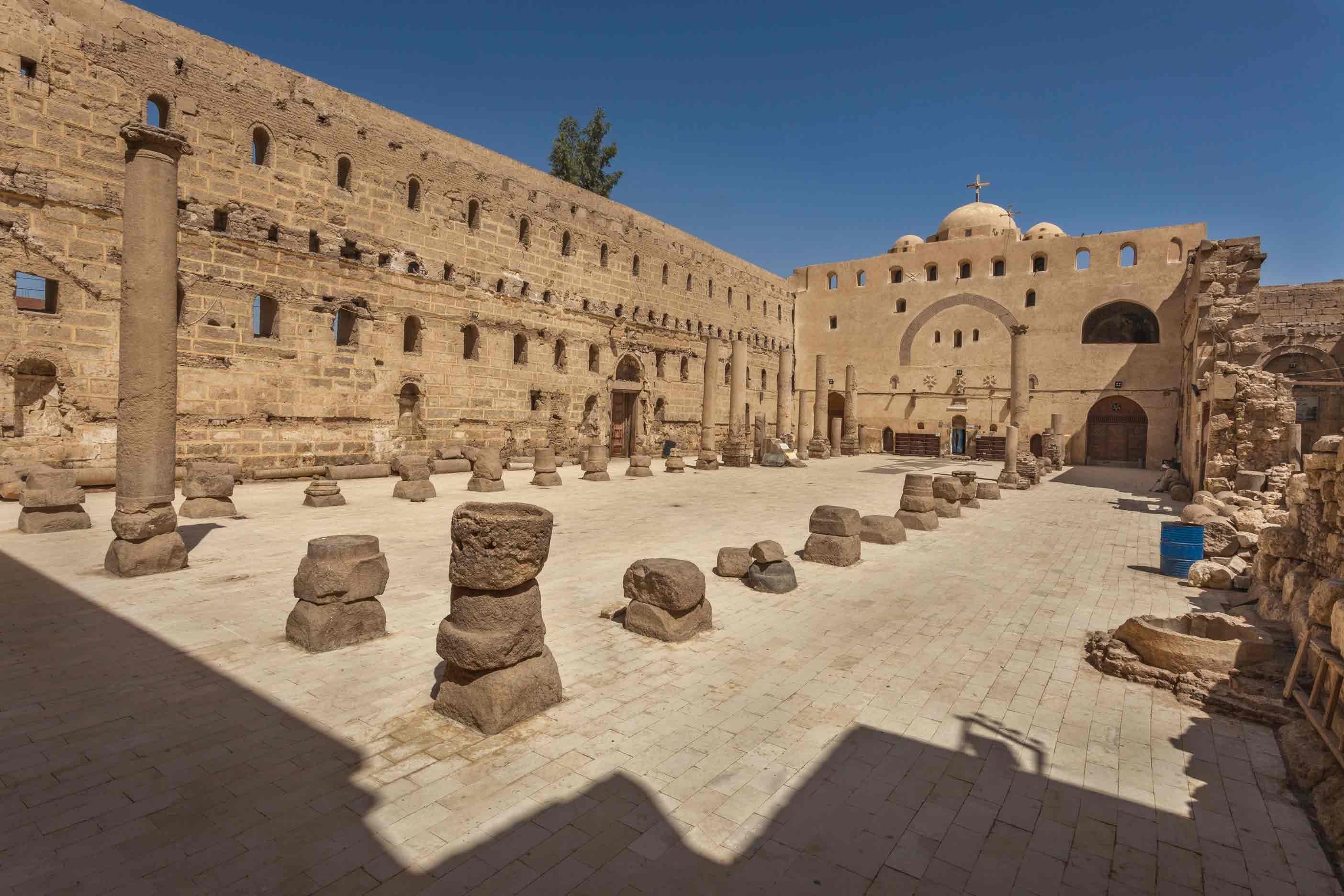Suhag
The history of Suhag extends as far back as the 1st Dynasty, when Abydos (located in present day Al-Balyana) served as the capital of Egypt. This area is packed with exquisite temples, tombs, monuments, and places of interest for both ancient Egyptian history buffs and those interested in the early days of Coptic Christian monasticism.
Don’t Miss
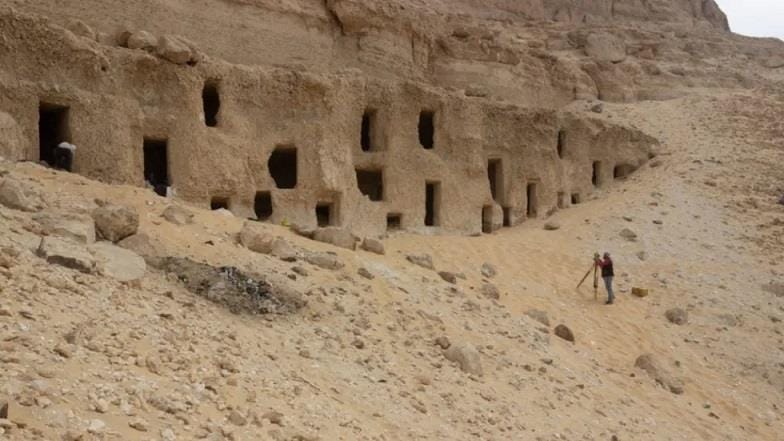
Al-Hawawish Necropolis
An ancient cemetery for the inhabitants of the city of Akhmim that contains over 800 tombs dating back to the Old Kingdom and the First Intermediate Period. Five of the tombs in the necropolis are well-preserved.
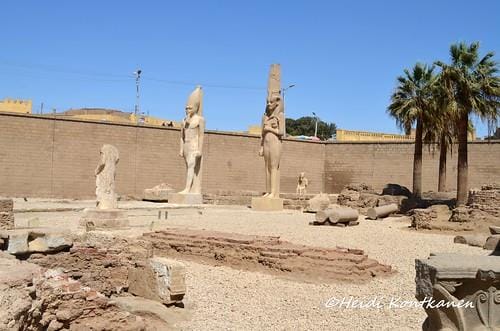
Open-air museum at Akhmim
Marvel at the stunning 11-meter-high statue of Meritamun, daughter of Ramesses II, as she stands in excellent condition next to her father’s recently restored statue. Remains of Roman statues can also be found on site.
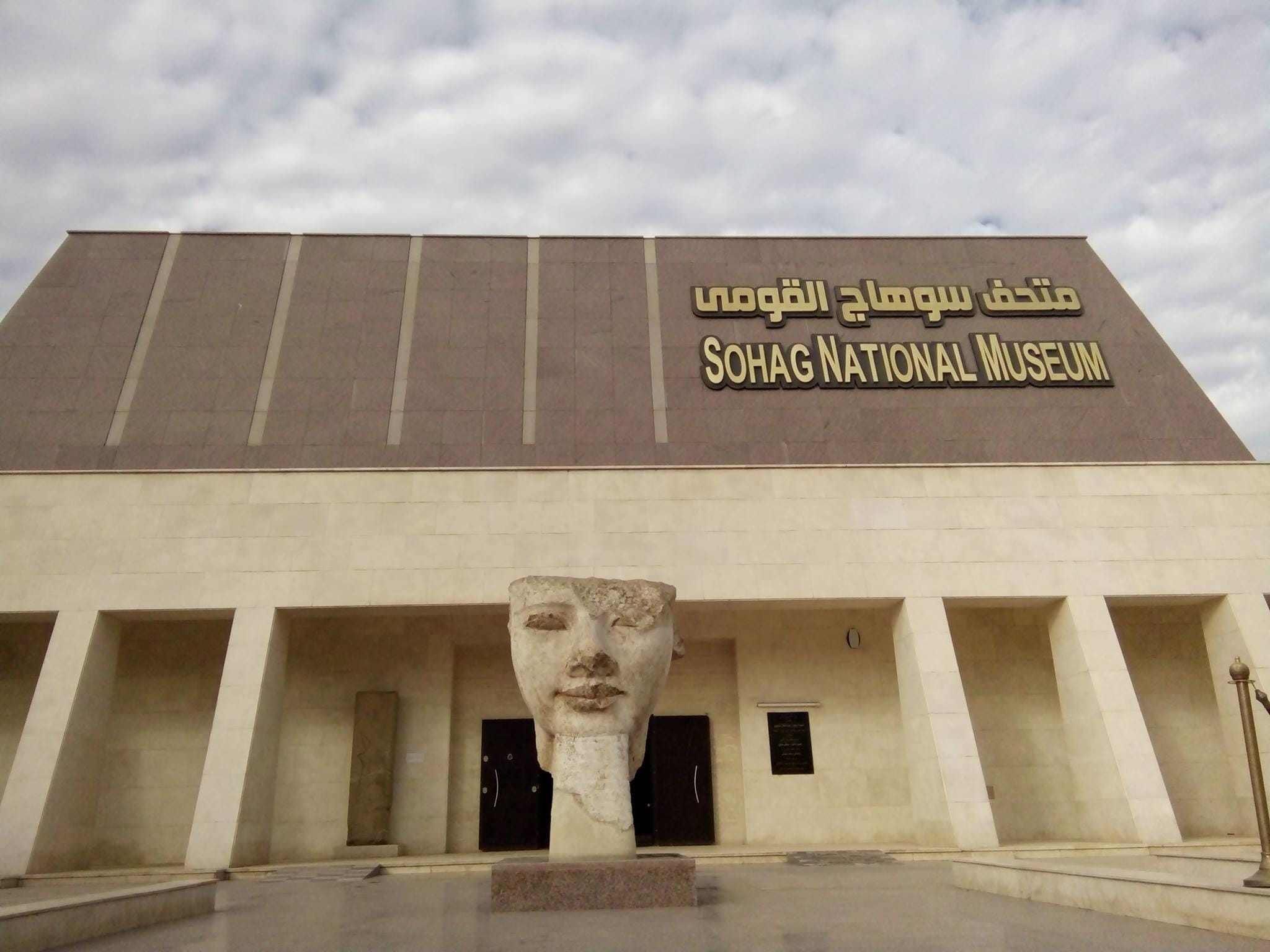
Suhag Museum
Home to a collection of around 7,000 pieces showcasing the history of the area.
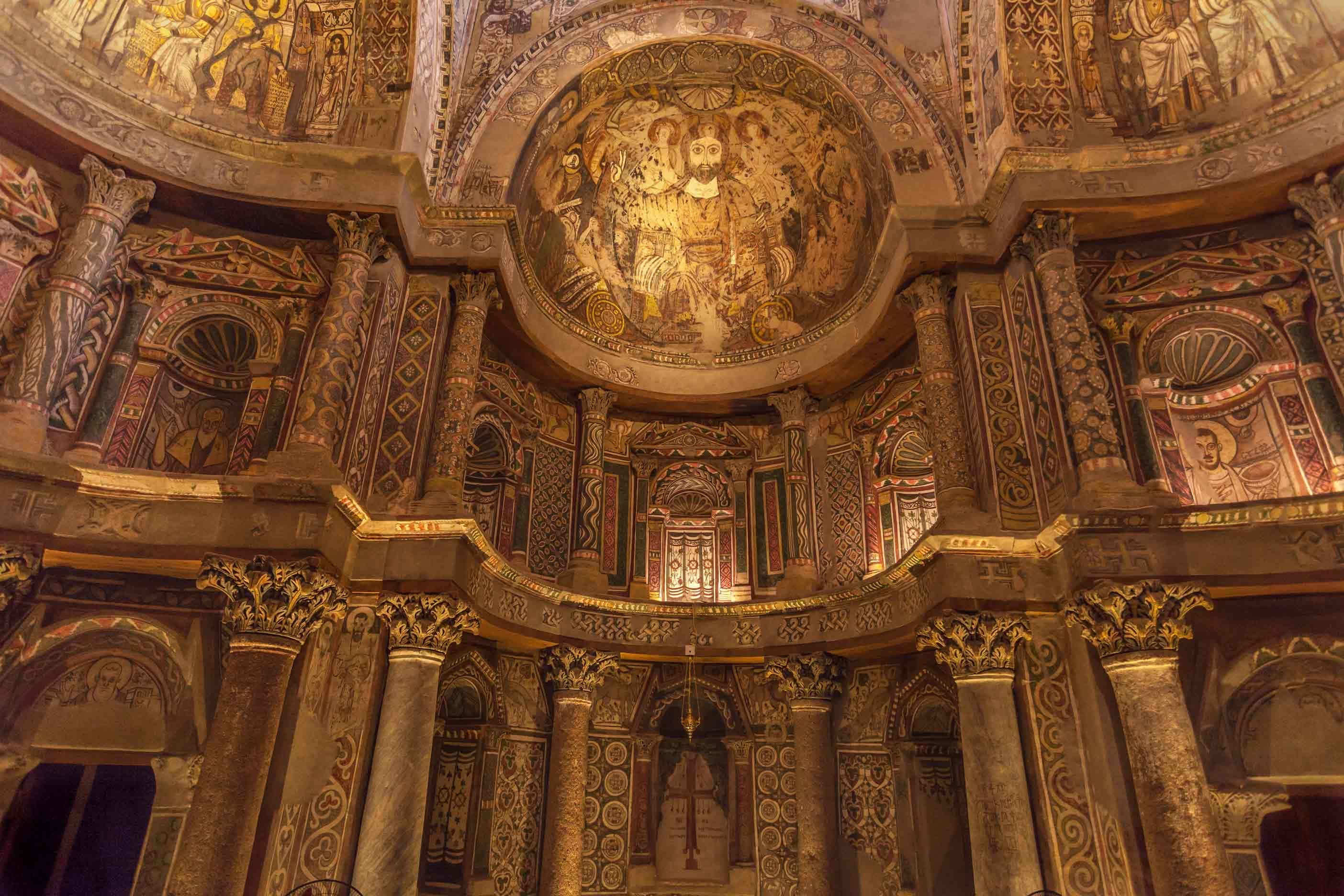
Deir al-Ahmar (the Red Monastery)
Founded by Besa, a disciple of St Shenouda, and dedicated to St Bishoy in the early 4th century AD. The structure is modeled after the White Monastery and considered one of the most important monasteries established during the early years of Christianity. The impressive building gets its name from the red bricks that make up most of its masonry. Around 80% of the surface of the monastery’s two chapels, the Chapel of St Bishoy and that of St Bigol, are still covered with painted plaster and frescoes depicting Jesus Christ, the Virgin Mary, the Four Gospels, and the Apostles. These magnificent works of art are reminiscent of the Hagia Sophia in Istanbul and the church of Ravenna. The area south of the church is home to a fort that dates back to the reign of Empress Helena, the mother of Emperor Constantine.
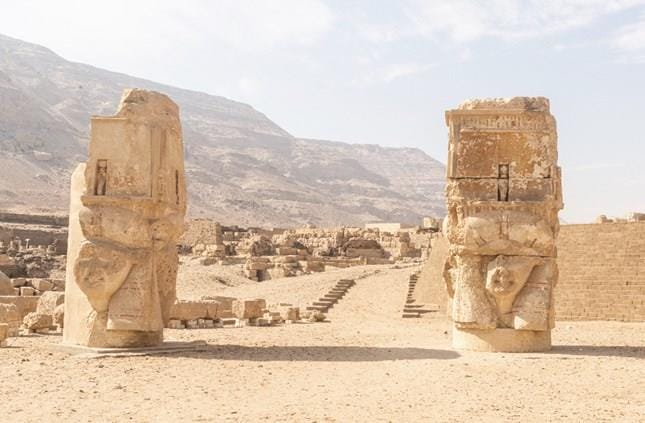
Al-Sheikh Hamad (Athribis)
home to the Temple of Ptolemy XII, the only large limestone Ptolemaic temple, and possibly the largest ancient Egyptian mammisi (a birth house used for the divine birth of gods and goddesses, annexed to a larger temple). The site also includes remains of a Coptic basilica church that dates to the 5th and 6th centuries.
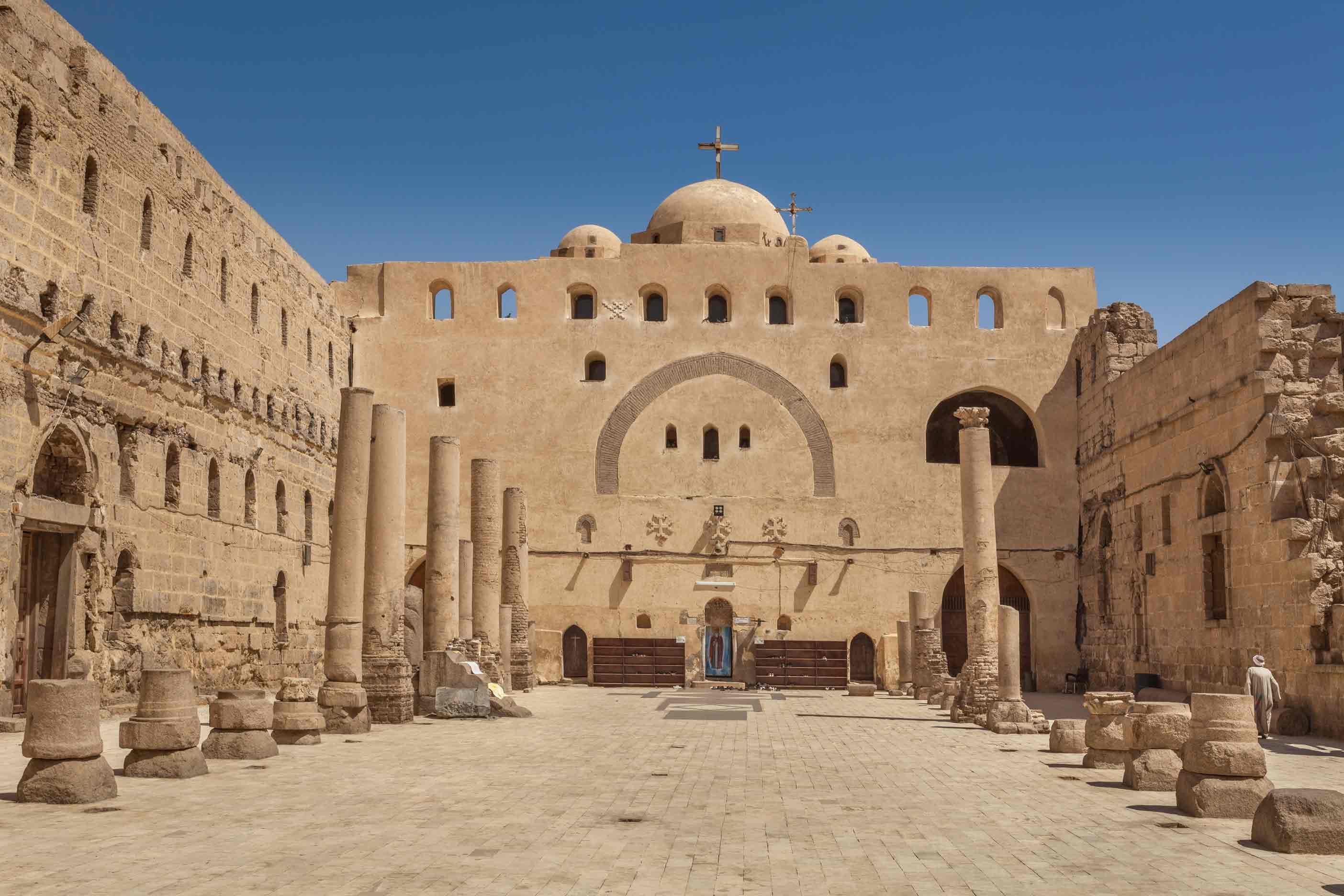
Deir al-Abiad (the White Monastery)
A structure built in white limestone and founded by St Pigol in 442. It was once home to a flourishing community of monks and nuns under the leadership of the mid-5th century cleric St Shenouda, who was instrumental in influencing and shaping early monastic practice. The only surviving part of the original monastery is the church complex constructed in Basilica style. It remains one of the rarest examples of late Roman and early Byzantine architecture in Egypt. The Monastery became once again active in the 1970’s when pilgrims and visitors began attending the festival of St Shenouda in July.
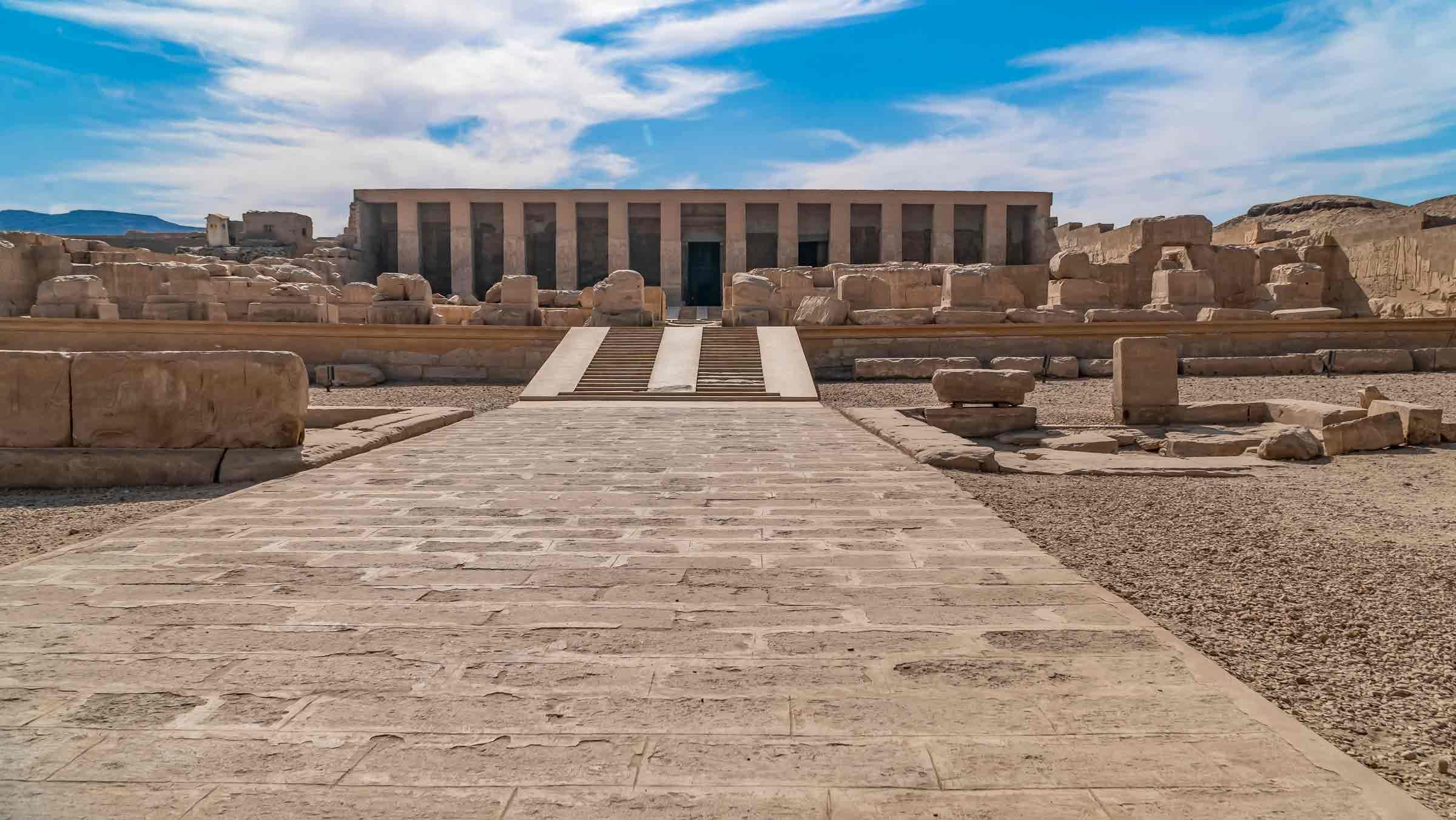
Temple of Seti I in Abydos
The temple is dedicated to Osiris, the god of the afterlife. The temple was completed by Seti I's son, Ramesses II, and has an unusual L-shaped plan with exquisite relief carvings throughout the structure. It is surrounded by a pre/early dynastic necropolis of Egypt's earliest kings that later became a pilgrimage site for the worship of the god Osiris.
